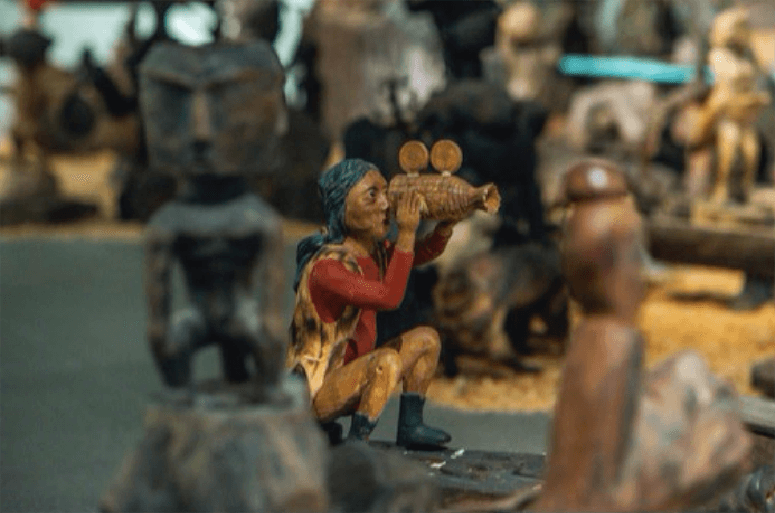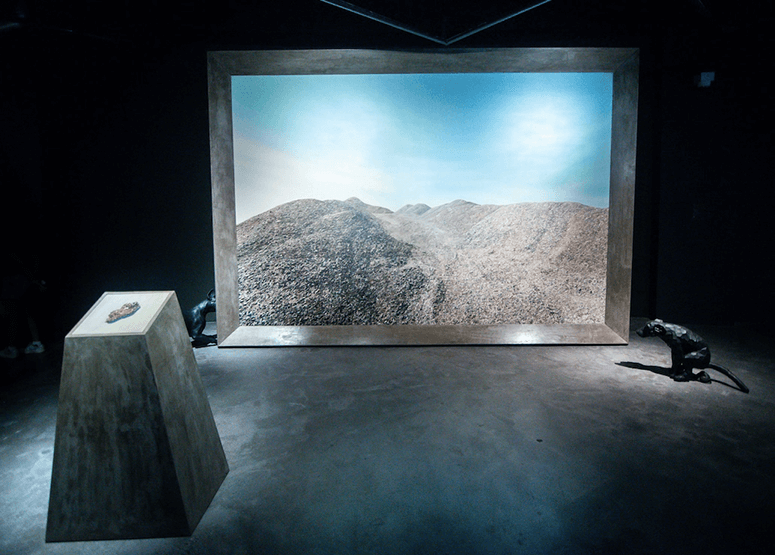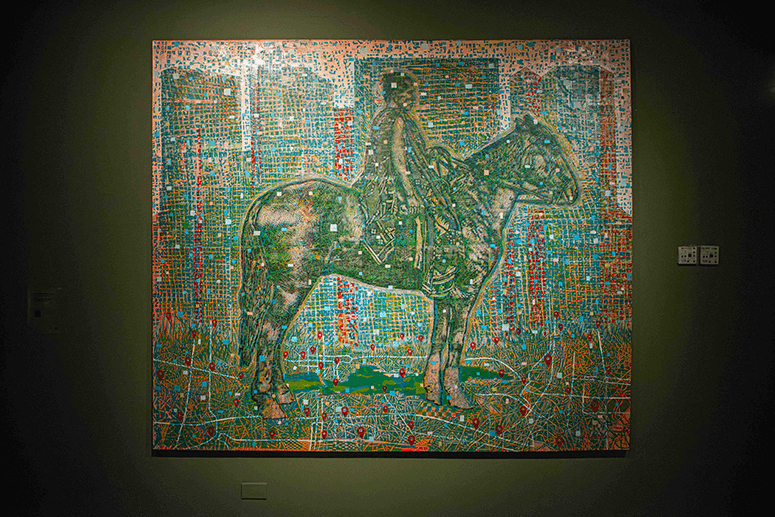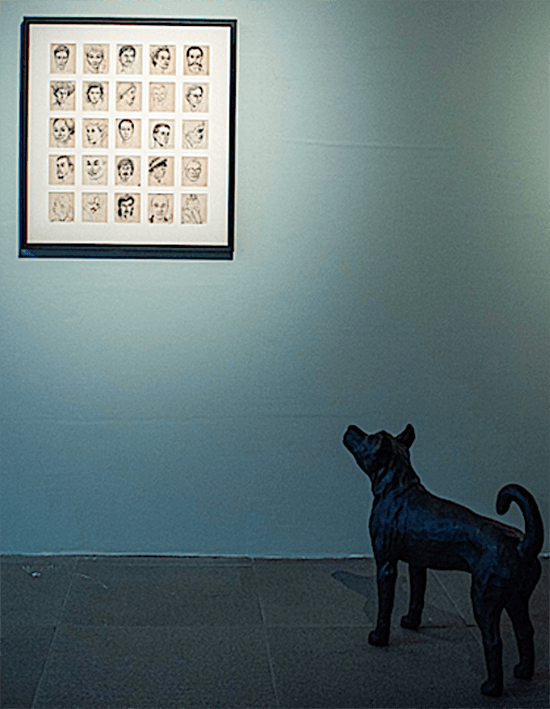Unearthing a Baguio art scene
Entering the third floor of the Ateneo Art Gallery, we are greeted by a grid of portraits featuring members of the Baguio Arts Guild. Drawn by BenCab as a touching tribute to his surrounding community, the work features the faces of Kidlat Tahimik, Tommy Hafalla, Rene Aquitaña, Willy Magtibay, Santiago Bose and more—artists who came together and met in cafes to discuss exhibition plans, creative practice, and the uses of indigenous media. Baguio, and the interlocking locales of the Cordilleras, formed the lifeblood of the guild, and the ongoing AAG exhibition “Gongs. Smoke. Blood. Earth.” puts this relation front and center in ways that exhume and revitalize pressing discussions about indigeneity, colonialism, and art as community practice.
The Baguio Arts Guild began in the mid-eighties, a time of emergent expansion and growth in the area. Camp John Hay, previously available to US citizens only, opened its doors to the public, becoming a sort of base that rendered an American way of living (see: golf courses, dollar wages, the availability of all kinds of ready-to-cook, processed foods) hypervisible to the masses. “Camp John Hay and the rest of Baguio City for that matter,” remarked Lisa C. Araneta, “so looked like America that it was the Honeymoon Capital of the Philippines for Filipino couples who chose not to (or could not afford to) go abroad after their wedding.”

Amidst the United States’ McDonaldization of the region, artists were looking for ways to locate a distinctly Filipino identity, a counter-trajectory that harnessed mixed media, installation, and graffiti practices. In the exhibition “Gongs. Smoke. Blood. Earth.,” that trajectory is brought into daring focus. It asks us to meet Baguio artists on their own terms across an expansive terrain that spans video, installation, found objects, wood carvings, and plenty more.

Co-curated by Nona Garcia and Kawayan de Guia, the exhibition gains its power not in a distillation of a “Baguio identity,” but in its pursuit to prioritize variety, collaboration and lineage. Gail Vicente’s contribution “Earth Song” is a continuation of the work of the late Robert Villanueva. Originally composed of handkerchiefs tied into a spiral formation, highlighting the image of an umbilical cord, Vicente’s re-staging of the work invited mothers to contribute handkerchiefs or “any fabric that represents (the mother’s) hard work, struggles and determination.”

Acting like a conversation between two Baguio-based artists, the work fascinates me in the way it speaks to the overarching ethos of the show: Baguio not as theme, but as starting node. A way to initiate an outgrowth of intersections.
Going through the exhibition feels like wading through Baguio’s thick air, its forest of slippery meanings. There are pieces full of unresolvable juxtapositions, like Leonard Aguinaldo’s “This Appearing Lands 1,” which presents a man on horseback set beneath a backdrop of location pins. It’s a strange and uneasy mixture that brings together cartography and the movements of man: what does geography symbolize when it becomes a means to conquer?

Close to Aguinaldo’s piece is Santiago Bose’s “Free Trade,” a colonialist snapshot of a white man in between two “little brown brothers,” as one graffiti writing effaces the photograph. Bose incorporates stamps, mythical sketches, and anatomical drawings around the photograph, spinning a fever dream that refutes any authority the central figure might possess.

One of the most striking works I encountered in the show was one I’ve already seen, but placed in this context, nearing the exit, grants it a kind of cumulative force. Nona Garcia’s “Building Mountains” was previously exhibited in her 2023 show “Overland.” In that show, it stood out for its magnitude, but situated within a swirling variety of practices, I lingered and stayed close to it because of the finality it represented. It’s in Garcia’s way of rendering such a simple image of a mountain with such austere and delicate mystery. In the subtlety she draws out of such vastness.

Though this is a show about an art scene, it can also be read as an homage, ultimately, to the environment that cultivated and nourished those artists. What ultimately drives the show’s exploration of identity is its outward-looking momentum, in the sensitive, generous, and interconnected view of material culture. Baguio, here in the making of the exhibition, is a frontier of offering and reckoning: wild ambition crossed with the sustenance to get there.
* * *
“Gongs. Smoke. Blood. Earth.” is presented in collaboration with the Victor Oteyza Community Art Space (VOCAS) Foundation and Baguio Kunst Book Publishing, and runs until July 20 at Ateneo Art Gallery, 3F. Guests visiting the show throughout its run are encouraged to contribute handkerchiefs for Robert Villanueva’s piece which will be recreated by Gail Vicente for this exhibition. For further inquiries, Ateneo Art Gallery at aag@ateneo.edu or call (02) 8426-6488.


